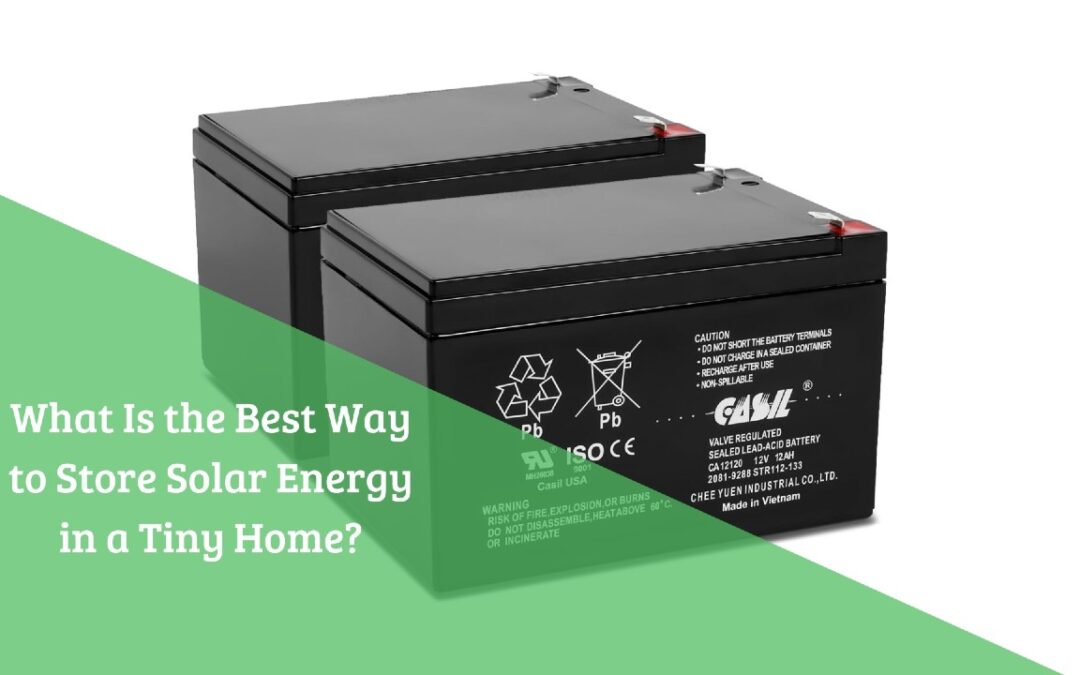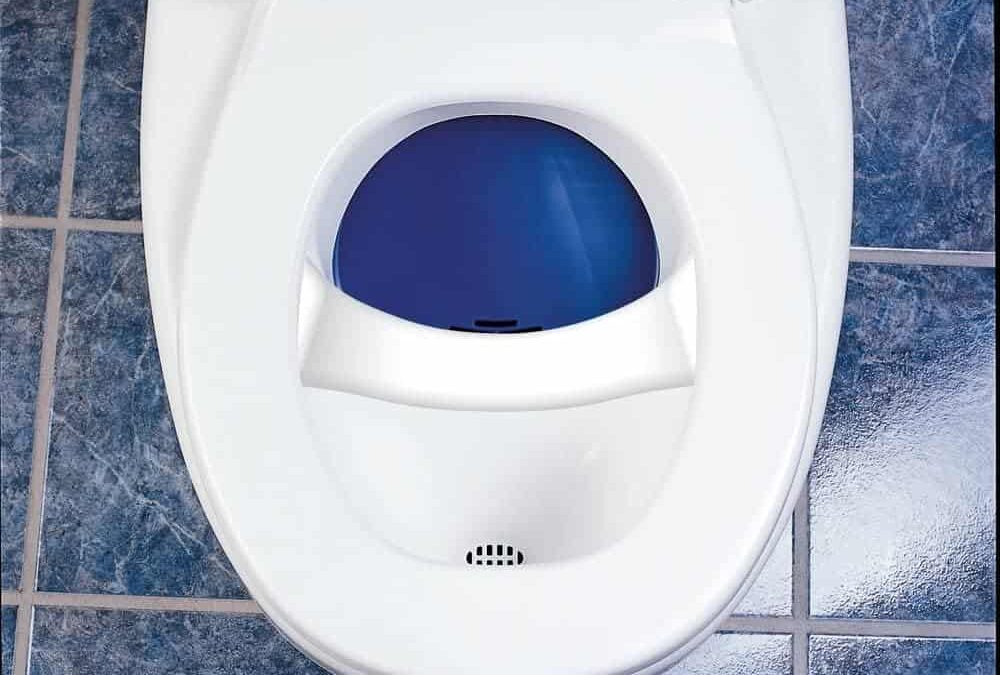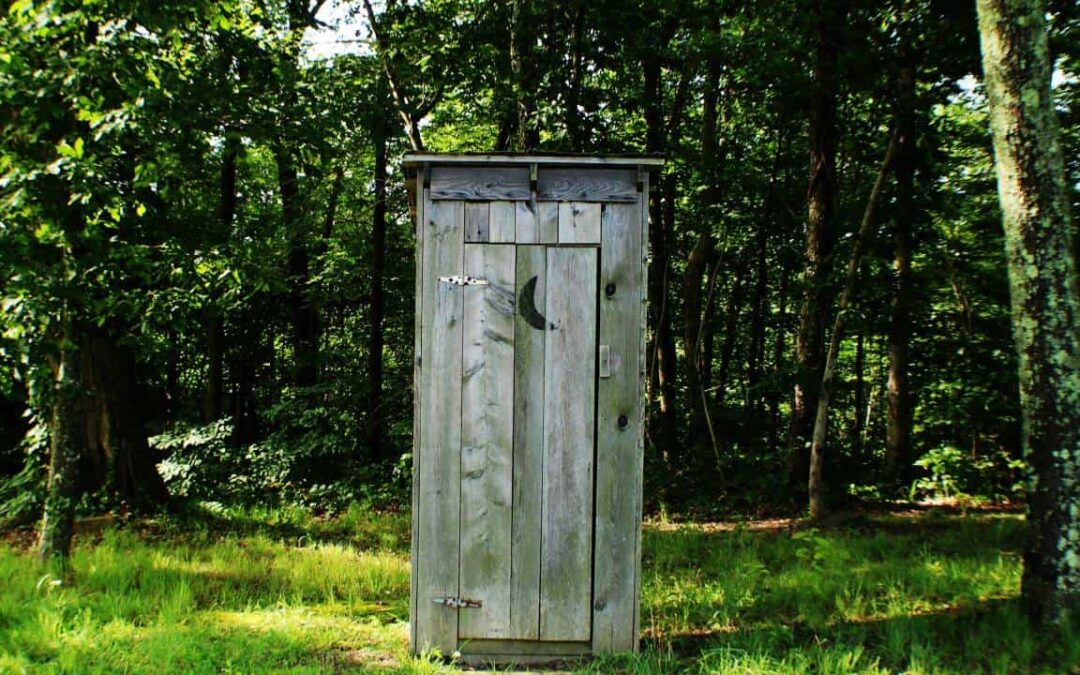Small homes are quickly gaining popularity, with focus on straightforwardness, sustainability as well as cost effectiveness. However, a plumbing system for such a small living space requires careful planning and the right tools. This blog will walk you through picking out resources and equipment needed for installation of an effective tiny house plumbing system.
Tiny House Plumbing 101
Plumbing in a Small Space
In a tiny house, every square inch matters. Traditional plumbing setups, designed for more spacious homes, often don’t translate well into these compact living spaces. This limitation necessitates:
- Compact Fixtures: Smaller sinks, showers, and toilets are common in tiny houses. These fixtures must be carefully selected not only for size but also for their efficiency and functionality.
- Innovative Layouts: Plumbing layouts must be as straightforward and compact as possible to conserve space. This often means designing multi-functional areas where a single water source serves multiple purposes, such as a kitchen sink that’s also accessible from the bathroom.
Efficiency and Conservation
The ethos of tiny house living often includes a strong emphasis on sustainability and reducing one’s environmental footprint. This impacts plumbing choices in several ways:
- Water Usage: Water conservation becomes critical, not just for environmental reasons, but also to reduce the need for large water storage tanks in off-grid setups. Low-flow fixtures, such as toilets, showerheads, and faucets, become essential.
- Heating Efficiency: Tiny houses benefit significantly from water heaters that are both space-saving and efficient. Tankless water heaters, which provide hot water on demand without the need for a storage tank, are a popular choice.
- Waste Water Management: The handling of greywater (from sinks and showers) and blackwater (from toilets) requires careful planning. Some tiny houses use composting toilets to minimize water use and simplify waste management, eliminating the need for a traditional sewage connection.
Adaptability for Mobility
Many tiny houses are built on trailers, offering the option of mobility. Plumbing systems in these homes must be designed with this in mind, allowing for quick disconnection and reconnection. Systems must also be secured against movement and vibration to prevent leaks and damage.
Regulatory Challenges
Plumbing in tiny houses can also present regulatory challenges, as building codes and zoning laws often do not account for the unique aspects of tiny living. This can affect everything from the type of plumbing fixtures used to how waste is managed. Navigating these regulations requires research and, in some cases, innovative thinking to meet legal standards while still achieving the goals of tiny house living.
Resourcefulness and Creativity
Finally, plumbing in a tiny house often requires a degree of resourcefulness and creativity not typically necessary in traditional homes. This might mean using rainwater collection systems for non-potable water needs or designing a custom sink that fits perfectly into an unconventional space. For many, this creative problem-solving is part of the appeal of tiny house living.
In summary, plumbing for tiny houses requires a thoughtful approach that balances the need for compact, efficient solutions with the desire for a comfortable, functional living space. It challenges traditional norms and encourages innovation, making it a fascinating aspect of tiny house design and construction.
Types of Systems
Comparing traditional plumbing systems with off-grid plumbing systems, particularly in the context of tiny houses, major differences exist between their water sources, waste management strategies and overall environmental impacts. These two unique system have different faces of challenges and opportunities which mainly depend on where a person lives or what kind of life style he has and his awareness about the environment.
Traditional Plumbing Systems vs Off-Grid Systems
Water Source
Traditional systems are typically connected to the city water supply enabling steady access to clean water. While this connection makes it easier to get water, it also implies that for such system to be available, a tiny house must remain at one place only.
For off-grid living situations, rainwater harvesting, nearby natural springs or even hauled-in water can be used among others. Consequently, this independence from city supplies calls for careful use of available water which must often undergo treatment before consumption. In other words; daily usage as well as system design in off-grid living determines how much freshwater should be preserved.
Waste Management
Sewage disposal is managed by municipal connections making waste management easy without personal intervention. Traditional plumbing can therefore include standard toilets and fixtures without modifications for reduced water usage or waste processing.
Off grid waste management options include composting toilet that largely reduces the amount of water used while producing compost manure and greywater systems that reuse sink and shower waters for non-potable purposes. This requires more input than traditional methods but saves huge amounts of both wastewater as well as effluents’ sustainability.
Environmental Impact
The environmental implications will mainly rely on how the municipal supply and sewage systems treat their sources. However beneficial these facilities may be, they do not essentially encourage saving water or reducing waste. Nonetheless, occupants can minimize their ecological footprint by selecting low flow fixtures as well as adopting other measures like greywater recycling.
In general, off-grid systems are devised with sustainability in view of minimizing water wastage and reducing waste. This reduces dwelling’s ecological burden through sustainable water use and appropriate waste management practices. However, these designs may be more complicated to formulate and preserve hence requiring higher initial input in terms of time, planning and resources.
Ultimately, whether to choose traditional or off-the- grid plumbing depends on values/lifestyle/and location of the small house owner. While traditional system offers simplicity and regularity without thinking about its impact on environment; sustainability marks off-the-grid plumbing leading people into active participation in water control as well as waste handling.
Tools that are Essential for Tiny House Plumbing
Whenever you are setting up a small building plumbing system or doing some repairs, it is crucial to have the right tools within reach. The unique difficulties that come with working in little areas make your toolbox contain normal plumbing tools as well as those made specifically for tight spaces. Below is an in-depth look at the necessary tools for plumbing tiny houses.
Basic Plumbing Tool Kit
- Tube Cutter: It is indispensable when it comes to slicing through copper, PVC or PEX tubing exactly. For tiny houses, both the normal and the pipe cutter for close quarters may be used hence making this one ideal for small places of work.
- Spanners: It’s a must-have tool because they can change pipes, accessories and nuts. When handling big diameters or stubborn fittings, a set of pipe wrenches may also be really helpful in holding and turning pipes.
- Sealer: Thread seal tape (PTFE tape) of high quality and pipe thread sealer (pipe dope) are very important for creating watertight seals on threaded joints so as to avoid leakage.
- Plumber’s Putty: This is used to keep water from leaking out of faucets and drains by forming a watertight seal around them.
- Plumbing Pliers: These ones are very useful in gripping different plumbing components tightly, loosening them and tightening too; they are called tongue-and-groove pliers most of the times.
- Tubing Cutter: A tubing cutter helps to make clean cuts with straight edges on small pipes or tubes which ensure better connections.
- Hand Saw: A compact hacksaw is another multi-purpose tool that can be used to cut through metal pipes, plastic tubes or even hardware related to plumbing fixtures.
Special Plumbing Tools Made for Tiny House Conditions
However, there are particular specialized devices that could simplify any kind of plumbing job within tiny houses due to their space constraints:
- Miniature Tube Cutters – these resemble smaller versions of standard tube cutters but have been designed to fit in small spaces. These ones will be able to cut pipes with very little space for you to move around.
- Flexible Inspection Cameras – other names for these types of cameras are endoscopes or borescopes which can go through small gaps, and tight turns and view inside pipes. This device is invaluable when it comes to diagnosing blockages or leaks because it doesn’t require extensive break down nor does it involve the tearing of walls.
- One-Handed Bar Clamps – These clamps are particularly useful when working with one hand holding a pipe as the other is free to do something else; where space does not permit conventional methods of holding.
- Offset Pipe Wrenches – this wrench has a jaw offset at an angle to handle making it possible for use in tight locations where there is no room for standard pipe wrenches.
- Cordless Compact Drill/Driver: In restricted areas, a compact battery powered drill may be more appropriate than a conventional one, allowing users to penetrate holes or drive screws into confined spaces.
Important Resources for Designing and Implementing
Installing and operating a plumbing system in a small or tiny house implies making plans and having access to appropriate materials. From software tools that enable visualization of designs to communities where one can get advice on and share their experience, even knowing when to involve experts, these are the resources you will require:
Designing Software/Apps
- SketchUp: Known for its ease-of-use and adaptability, SketchUp is packed with powerful tools for designing elaborate piping diagrams which would let you see your whole project of mini-house in 3D.
- AutoCAD: AutoCAD is more technically advanced CAD (Computer-Aided Design) software than SketchUp with extensive plumbing design options and other architectural needs.
- Home Designer Suite: If we consider homeowners who want to experiment with DIY projects, this tool is beneficial. It offers simple design tools that encompass plumbing layouts suitable for a small home plan.
- PlumbingCAD: Aimed at producing detailed plumbing systems, PlumbingCAD is ideal for professionals but also accessible by individuals planning their tiny house plumbing system.
Internet Forums/Communities
- Tiny House Network: This online community serves as an interchange point for people interested in tiny houses to exchange ideas, designs and what not including tiny house specific plumbing solutions.
- Reddit – /r/TinyHouses: A subsection of the popular Reddit website dedicated specifically to tiny housing includes sections wherein users describe their experiences such as tasks they have undertaken concerning plumbings issues along with associated challenges they faced before finding solutions.
- The Tiny Life: Everything about living small could be found here; from design hints up to sustainability issues, there are also DIY guides provided. The forums on the site itself or the comments section could be good sources for questioning plumbers.
- Home Improvement Forums: Websites like DIYChatroom.com and DoItYourself.com have sections set aside exclusively for discussing problems related to plumbing where both professionals and amateurs talk about it by giving advice or asking questions respectively.
Professional Consultation
However, plumbing is not a simple task and with its complications one might require the services of a plumber for their first project. Below are some reasons why you should consult a plumber:
- Safety: A professional plumber ensures that all work is done safely following local codes and standards, which is very important when dealing with a confined space like a tiny house.
- Efficiency: Plumbers can provide insights into the most efficient systems and fixtures for saving space and reducing water usage, crucial in tiny house living.
- Problem Solving: Professionals can envision potential problems and offer other solutions based on what they’ve encountered before; this could be time- and money-saving.
- Compliance: Your plumbing system must adhere to local building codes and regulations, this will be easily achieved through assistance by a professional plumber who knows how to get around such laws fast.
- Quality Assurance: With systems such as plumbing, it is better to allow professionals do the installation because then you know it was correctly built and will always work.
Designing and operating tiny homes require maximizing space and conserving water. By blending contemporary fittings with green practices, occupants of these little houses can lead normal lives without compromising on functionality or the planet. How can that be achieved?
Maximizing Space through Creative Designs
Tankless Water Heaters: Unlike their conventional counterparts, which occupy a lot of room by having huge tanks attached, tankless water heaters supply hot water whenever it is required at the point of use. This ensures there is no wastage as energy nor physical space. Read our blog about the best tiny house water heaters of 2024.
Dual-Purpose Sinks: To save on costs and space, consider installing sinks that serve multiple purposes. For instance, when not in use a kitchen sink fitted with a cover can also double up as an extra counter space top. In bathrooms, try a sink over the toilet design where the water used for washing hands is directed to flushing.
Compact Multi-Use Fixtures: Go for multi-functional fixtures. Alternatively, shower heads can be used both as a sink faucet while others are sold in compact all-in-one washer dryer units thereby saving vital spaces.
Wall-Mounted and Corner Fixtures: Though not common place corner showers and sinks will make good use of underutilized corners while wall-mounted toilets and sinks will create more room inside by ensuring less floor-space is used.
Water Preservation Techniques
- Low-Flow Faucets and Showerheads: Standard faucets and showerheads should be replaced with low-flow versions to cut down on water consumption without having any effect on the water pressure experienced during usage. Such fixtures minimize how much water flows through them but still work as expected.
- Rainwater Harvesting: Collecting rainwater for non-potable uses like gardening, toilet flushing (if adequately filtered), even taking showers if properly filtered could relieve your main water supply significantly especially in an off-grid tiny home setting-up.
- Composting Toilets: Tiny homeowners may eliminate blackwater systems that require significant amount of water by choosing composting toilets over the traditional ones.
- Greywater Systems: This involves using water from sinks, showers and washing machines for other non-potable uses such as toilet flushing and watering plants hence reducing the total volume of water consumed even more. Such a simple greywater system consists of just filtering and redirecting this water to where it is needed.
- Drought-Resistant Landscaping: Outdoor watering can be reduced by choosing plants that need less water especially in tiny homes with a yard. Furthermore, designs for minimalistic gardens (xeriscapes) can bring about beauty without necessarily consuming much water.
- The space-saving innovations and conservation measures discussed above do not only improve efficiency and sustainability in a tiny house but also promote an environmentally responsible way of life. These principles enable the homeowners to maximize their limited spaces thereby reducing their environmental footprints considerably.
Concluding The Tiny House Plumbing Systems
In brief, the process of establishing a good plumbing system that is efficient and sustainable in a small house entails selecting carefully compact multipurpose fittings and being committed to water conservation. These strategies include picking tankless water heaters to save both space and energy, low-flow faucets installation as well as rainwater harvesting system that are necessary for the maximum exploitation of limited space available with minimum environmental impacts.
Moreover, one cannot overemphasize the role of right tools and resources. For instance, a tiny house owner needs to have a well-stocked plumbing toolkit along with some specialized tools for working in cramped quarters to undertake installations effectively or fix broken bits. Besides, contemporary design software can aid in creating a unified and functional plumbing layout.
Furthermore, navigating through the complexities of plumbing in tiny houses is also greatly served by online communities and forums on tiny living which collectively wisdom plays an integral role. In this forum, experience sharing as well as solutions may give you invaluable perspectives leading your decisions on plumbing.
However, DIY projects can be extremely fulfilling but recognizing when expert input is essential at certain stages during your plumbing project guarantees safety, conformity and effectiveness. Consultation with professionals particularly during initial planning & designing stages will help save time money as well avoiding any possible future problems relating to construction.
Therefore before you embark on setting up or upgrading your own little residence’s pipes take some time doing thorough research and plan it out meticulously. Using appropriate tools suitable for you will go far since there are many resources available from both online platforms like the tiny house community plus professionals among others where consultations are made from. By this way you will overcome all obstacles associated with small home piping ensuring comfortable eco-friendly living environment in a cost –efficient manner.







